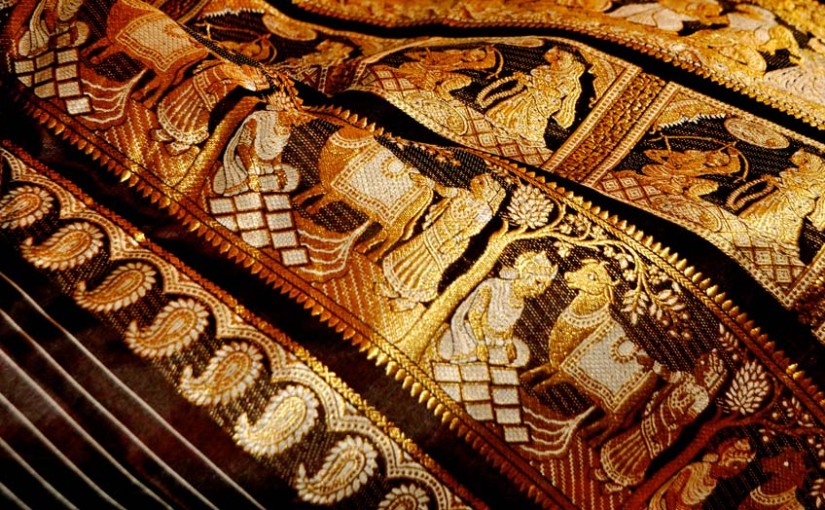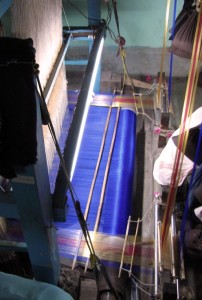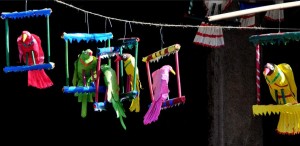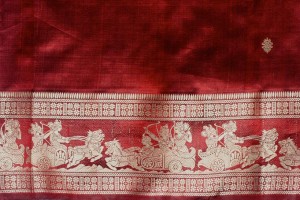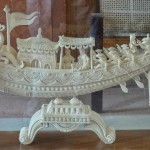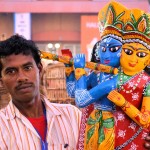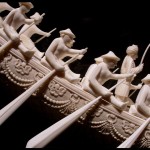Tussar Silk is produced from silkworms. It is also known as Tusser, Tushar and Tussah and the sarees made from this particular silk is very popular in India. Its popularity is due to the gold sheen and has shorter fibres. It is the chosen material for saris and also punjabis for Indian men. The gold sheen makes it appear rich textured and also shimmering. Bulk production is Tussar silk is done in India out of which around 40% is from West Bengal. The tussar silk sarees produced in Bankura are famous for their kantha stitch which is a particular type of stitching process done by hand instead of machines. Kantha stitched silk sarees are quite expensive and exquisite. Tussar silk sarees are available in various beautiful colors. Tussar silk is also used to make punjabis for men and salwar suits for ladies. These traditional apparels also appear beautiful made from this silk. Producing Tussar silk is considered to be a cottage industry in Bankura where a large number of handlooms are found. This is a tradition of Bankura and thus the weavers still maintain the conventional handloom process to produce the silk sarees. Tussar Silk is also known by another name which is Kosa Silk. Tussar Silk clothes are exported to Gulf countries, to the USA and also various European countries.
Some of the characteristic features of Tussar Silk are:
- Various natural shades
- Light and airy
- Provides a comfortable and cool feeling
- Rich coarse texture
- Delicate in nature
Maintaining Tussar Silk
Maintaining tussar silk clothes takes a little caring. Dry washing the clothes is the safest option so that it retains its natural texture. You can also use cold water for clothes other than sarees to wash off the dirt. But remember to wash it with gentle hands since it’s delicate. Avoid using chemical bleach and never dry in directly under the sun. Silk needs to breathe and hence you must not store in inside paper. Fold it nicely and store it. Some of the most popular colors in tussar silk are magenta, red, turquoise, gold, dark teal, ultramine, chocolate and purple.
Baluchari Sarees
The Bishnupur region in Bankura is famous for producing Baluchari sarees that are made from tussar silk with particular types distinct of patterns on them. Woven on Jacquard punch-card looms, the Baluchari sarees have pallus and borders with episodes from Mahabharata woven on them. These exclusive sarees woven by the weavers are beautiful specimens of traditional art. However, making Baluchari sarees entail a lengthy process. The silk strands are separately dyed and put in a loom after which punch cards hanging from the upper part of the loom are used to make the designs on the strands. The punch cards shave holes in them and are rectangular in shape with various designs on them. The dyed strands are made to pass through these holes and accumulate into precise forms on the loom making some of the most desirable sarees made from silk.
Image Source: Flickr
